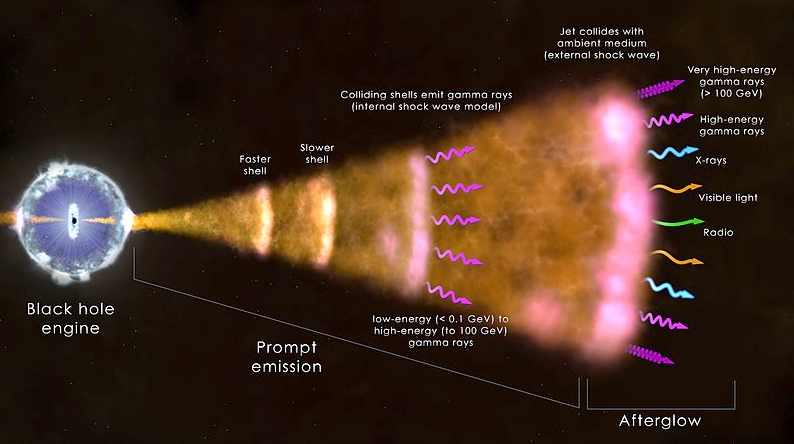
Phd Thesis
Site: Merate (LC)
Duration
3 years
Tutors
Giancarlo Ghirlanda, Lara Nava, Om Sharan Salafia
Contact
giancarlo.ghirlanda AT inaf.it
Description
Background: Gamma Ray Bursts signpost the death of very massive isolated stars or the merger of binary compact objects (hosting at least a neutron star).
They are produced by the formation of a stellar mass black hole – accretion disk system which powers bipolar relativistic jets.
GRBs are the most luminous transient sources in the universe and are currently detected up to redshift 9.2.
How the jet dissipates its energy producing the gamma ray flash we see is still not understood.
How the dissipated energy is converted into gamma rays (i.e. the nature of the emission process) is also highly debated.
In particular, discretization of the jet outflow may lead to the development of internal shocks where particles are accelerated and radiate through synchrotron emission.
Beside magnetic reconnection may dominate the energy dissipation in a magnetically dominated jet.
Synchrotron should be the leading emission mechanism but available spectral data seem do not fully support this scenario.
Scope of the thesis: develop a numerical model for the prompt emission of Gamma Ray Bursts which couples the dissipation and radiation mechanisms proposed so far.
Constrain the parameter space and, if possible, test the possible different scenarios by confronting with existing prompt emission observations.
The model can also be applied to study the science case of future missions, such as the COmpton Spectrometer and Imaging (COSI) satellite, a NASA mission which sees the participation of the supervisors as INAF delegates.
Crediti immagine: Wikipedia.
